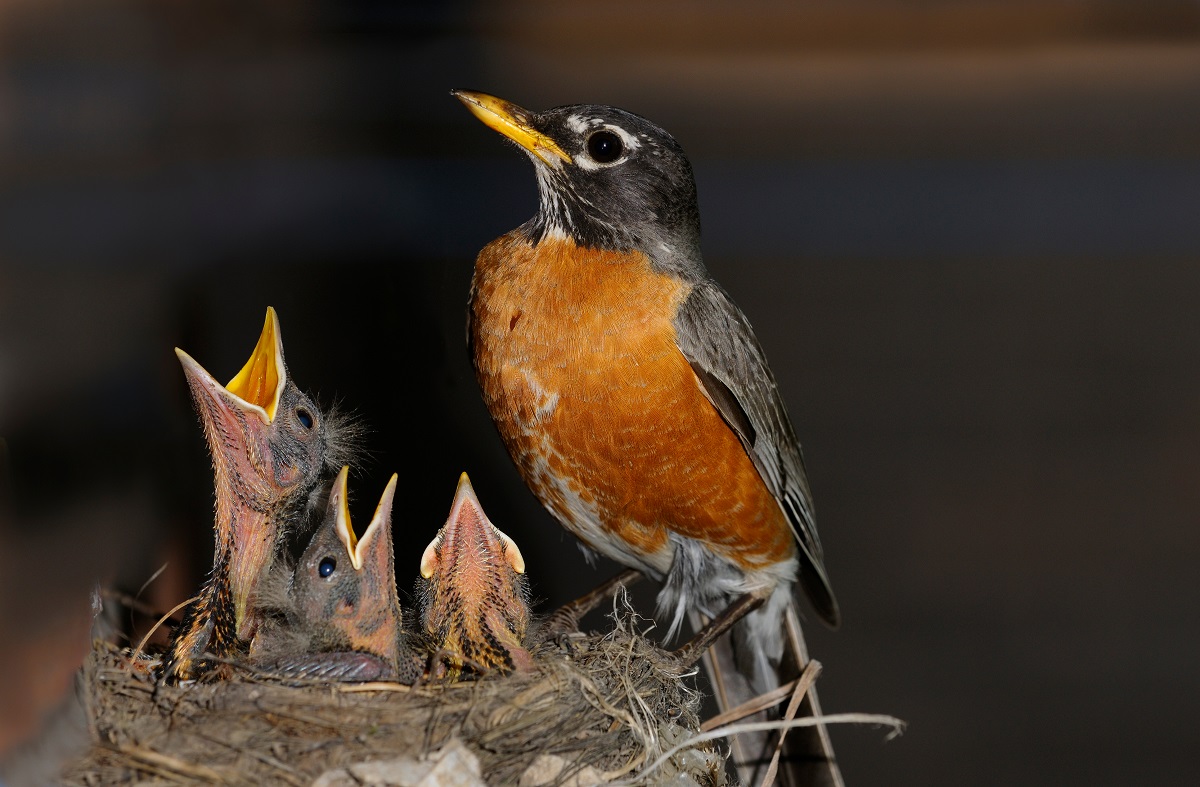The lifespan of a robin depends on living past the first year. Only about 25% of these songbirds survive the cold winters and predator. Robins that make it into their second year may live an average 5-6 years in the wild.
A few American robins of the Turdus migratorius species have been documented to live 17 years, but that lifespan is hardly typical.
A popular visitor in yards across America, this songbird is fair game for predators and natural disasters.
How Long Do Robins Live?
Depending on the stage of life the robin bird is in, different dangers await them. About 25% of them are killed or eaten in the first year.
If they survive well into the second year, their life expectancy increases drastically as they learn better life skills. While many live only two years, the average lifespan is from 5-6 years for birds in the wild.
Despite the high fatality rates, their numbers are increasing. In North America and Alaska, robin birds are among the most plentiful birds in the world as their population has increased 45% since the 1970s.
American robins are part of the thrush family, unlike European robins from the Old World flycatcher family. Although their bellies may range from peach to shades of red and orange, they are known as “robin redbreast.”
In the video below, we rounded up 10 little known facts about Robins!
What Accounts For Their Varying Lifespan?
Americafewerbins have a life expectancy of less than two years. The thirteen-month life expectancy is mainly because the robin birds experience high mortality rates during the first year of survival. In the wild, the lifespan of the American robins ranges from 5-6 years.
However, in captivity, a robin’s life expectancy is greatly expanded.
Examining The Robin Life Cycle
Each spring, the male robin comes to the area to mark the territory. Once the females come, he finds a mate after a courting ritual that involves singing and feeding the female. After these bird dinner dates, he mates with a female robin.
The female builds a nest and then lays a robin egg daily for a total of 4-7 eggs. After a two-week incubation, the baby robins emerge from the blue eggs, and both parents feed them regurgitated earthworms and invertebrates. In another two weeks, the nestlings leave the nest, and the small birds learn to fly. As their muscles develop, they become adept at it.
The pair of robin parents may mate again to produce two more broods. The female builds a new nest for each new family.
As winter approaches, they may join a flock of birds who may stick together for their first winter. They roost, search for food, and may migrate out of the area in search of a plentiful source of food. Young robins acquire important life skills in the presence of older birds. While robins are migratory birds, they may not go out of their general area if there is enough food available.
As the weather warms up, the robins return to previous nesting grounds to restart the annual cycle. While they are viewed as the harbingers of spring, even if they may have been nearby all winter.
Female robins begin breeding in the first year of their life. While robins do not mate for life, they may hook up with the same partner in multiple years to produce several broods of baby birds who repeat the same lifecycle.
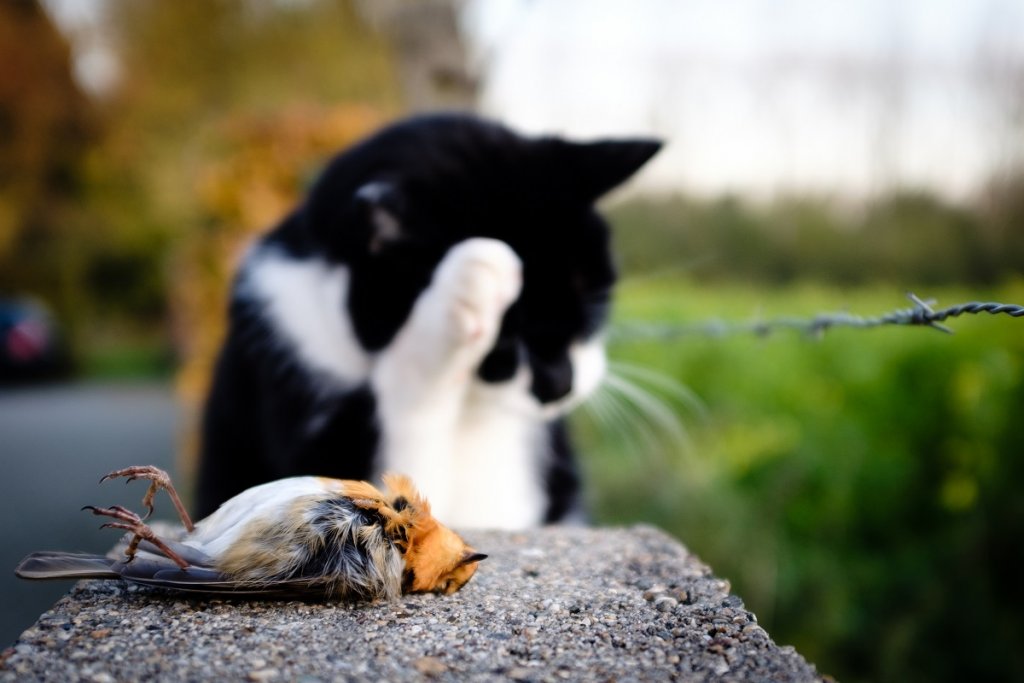
Why Do Robins Only Live 2 Years?
Robins face multiple threats. In the ecosystem, competition for food is stiff, which further decreases the birds’ life expectancy. Household and wild animals fiercely hunt these bird species for an easily accessible food source.
In the egg, hatchling, nestling, and fledging stages, young birds are at risk.
In the egg stage, robins are eaten by snakes, but many other predators seek them out too. After they hatch (the hatchling stage), raccoons, foxes, blue jays, squirrels, owls, and 28 species of birds of prey pursue nestlings and fledglings, young robins who have left the nest. Ironically, some enemies like jays and crows later become friends who warn them of danger.
Robins have up to three breeding seasons every year. Some brood nestlings (residents of the nest) are snatched from the nest before they are strong enough to leave the robin nest around 14 days (fledging stage.) They must learn how to fly once they leave, making them easy targets for predators as they practice how to fly.
Domestic cats are a serious threat to robins. When robins are preoccupied with tasks such as finding earthworms, bugs, and other food, cats grab and eat baby and adult robins.
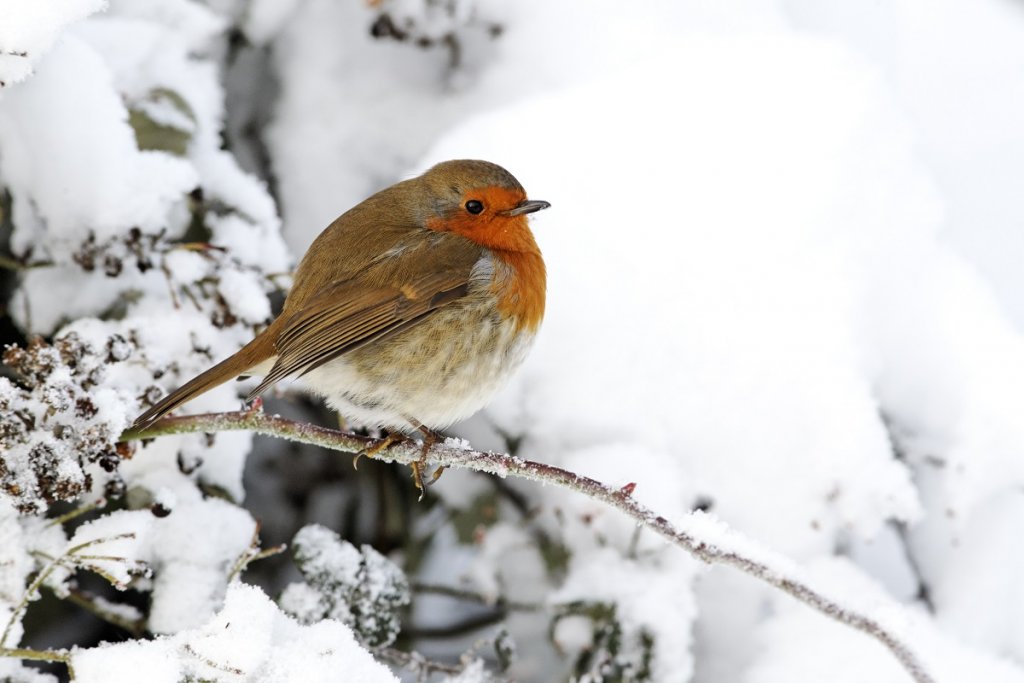
Is Cold Weather A Threat To Robins?
One of the main contributing factors to young robin’s death includes the severe winter climates experienced during the winter seasons.
Robins are hardy birds that can sustain freezing temperatures. The fact that many winter within 60 miles of home rather than thousands of miles supports this. They change their diets based on what is available to eat and have a short trip back to their nesting grounds in the spring.
Learning how to cope with the cold is one of the life skills these birds learn. Robins have an internal body temperature of 104° F, but when they fluff their feathers, they are so well insulated.
As Elizabeth Howard, Founder and Director of Journey North, notes that even in freezing temperatures as low as -30 F, “there can even be a 100-degree difference just through those layers of feathers.”
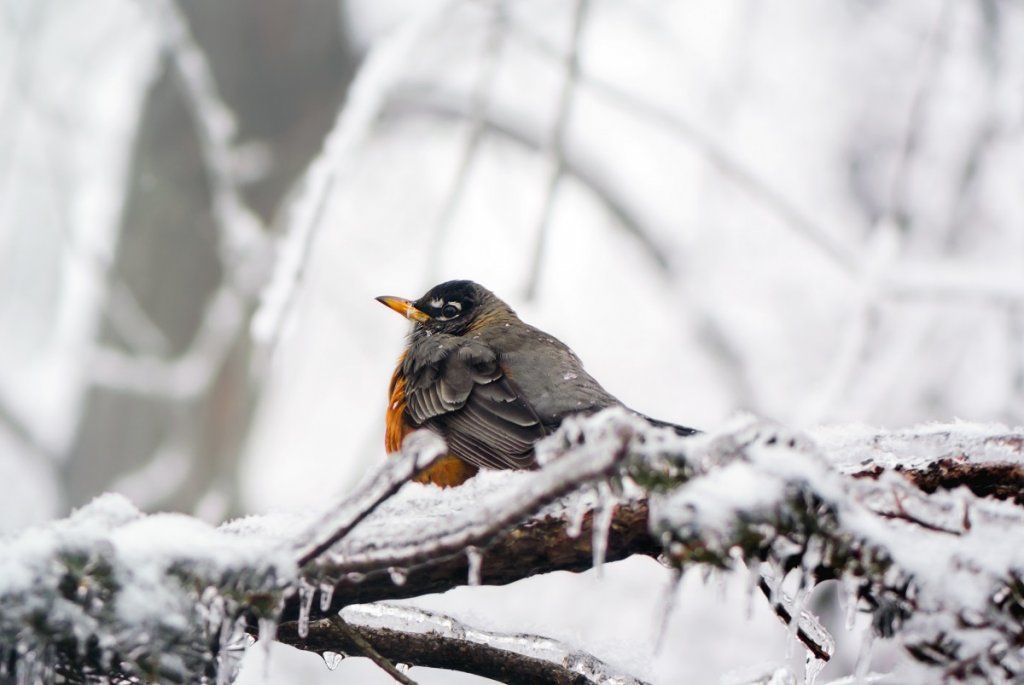
Robins generate a supply of preen oil that they use to waterproof and strengthen their feathers to avoid penetration by water and cold. Preen oil further enables the birds’ feathers to trap pockets of air in and around the bird’s bodies, effectively reducing the cold in the body.
Robin birds are reported to consume 10% of their body composition in a single winter night to combat cold. When the body fails to replace nutrients immediately, the birds could freeze to death.
Preening can be hazardous if the bird becomes distracted. A robin preens frequently throughout the day and in the process, may bury his face in his feathers. If a robin does not pay attention to his surroundings, he could be snatched by a predator.
Food unavailability is a crucial aspect of the low life expectancy of young birds. While birds enjoy fresh berries including blackberries, raspberries, grapes, and elderberries in the spring and summer, they move to dogwood, winterberry, silverberry, mountain ash, and apple berries in the fall.
In winter, they search out bittersweet, hackberry, hawthorn, red cedar, crabapple, and highbush cranberries in the winter. If a bad winter impacts their food chain, the young robins may not find enough to eat. Other predators having the same problem may grab robins.
Other Threats To Robins
Collisions and accidents of the birds with high billboards and communications towers also contribute to the low life expectancy of the birds. Robins also fly into windows and power lines and die from impact or electrocution.
When they are hunting food at ground level they can be killed by cars. These accidents are frequent and unreported, but contribute to robin mortality.
Robin can get thorns stuck in their coats and swallow them when preening.
As robins hop along the ground searching for worms and insects, they may traverse lawns treated with toxic chemicals. They can ingest the toxin when they eat or when they preen and die from the poisoning.
What Is the Longest Living Robin?
The longest-living wild-robin bird is the robin bird at Patuxent Wildlife Research Centre, which survived for 13 years and 11 months. However, some adult robins have been reported to exceed 17 years old in captivity.
Having a robin in captivity may dramatically lengthen its life. However, robins are wild birds who do not respond well to being caged. Captivity is so detrimental to these birds that they may pluck out their own feathers and become susceptible to diseases, and depression. Robins can carry West Nile Virus and other diseases, so keeping them in captivity might be risky.
Most robins in captivity were adopted by humans who took them in when they were sick or injured. Otherwise, robins are not sold for pets; depending on the area, it may even be illegal to own them. Even if local laws permit it, bird experts emphasize that it is unethical to take a bird from its habitat and cage it.
Robins like humans. They just do not want to be roommates.
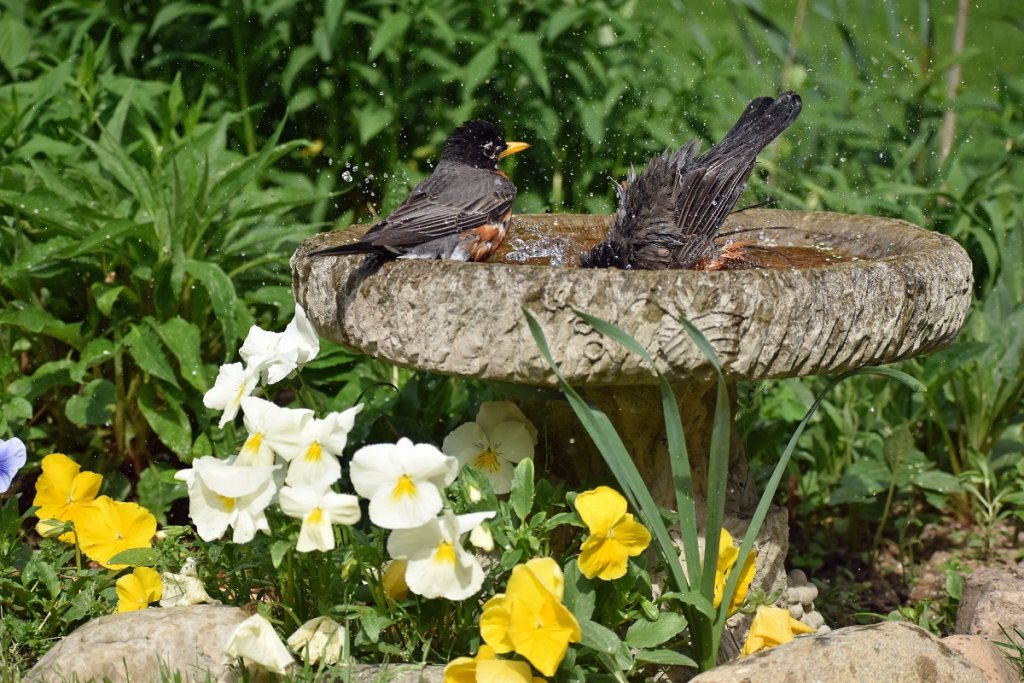
Can Humans Add To The Lifespan Of Robins?
Caging a robin even in hopes of “helping” it may not be a good idea, but there are things that humans can do to make life less of a hassle for them.
Robins, and many other birds, are subject to “environmental stressors,” such as lack of food, climate, and predators. Humans can mitigate these stressors to some degree. How?
- Keep cats indoors and well-fed.
- Avoid using toxic fertilizers, insecticides, and weed killers on your lawn. If you need to kill weeds, do it in spots rather than spaying the whole lawn to lessen the risk.
- Don’t rake all the leaves in the fall. During the winter, the birds might find insects under a blanket of leaves.
- Don’t prune bushes or remove all the fruit. Birds can find shelter in the brush and dine on the remnants.
- When considering plantings for your yard, plant varieties that offer fall and winter berries to birds.
- Maintain birdbaths with clean water. For the winter, when birdbaths are frozen, consider installing a heated birdbath or placing a heated dog bowl where the birds can get at for drinking and bathing.
- Set out fruit or mealworms for birds in the winter. Robins don’t like birdseed, so they might not find the food you leave near birdfeeders. However, they might approach dishes of food or window feeders filled with berries, apple slicers, or mealworms. They also might learn to eat suet at a feed.
While a human can’t do much to combat most robin predators, they can offer the birds some protection and a source of food.

